Generative AI for Gaming
As per the report by Market.us, the worldwide size of the Generative AI in the Gaming Market stood at USD 922 million in 2022, with a projected Compound Annual Growth Rate (CAGR) of 23.3%. The market is expected to witness incremental revenue of USD 7,105 million by 2032.
Game development has come a long way, and with the advancement of technology, there is an increased demand for unique and engaging gaming experiences. To achieve this, game developers are turning to generative AI tools and techniques. These tools have revolutionized the gaming industry, allowing developers to create fresh and exciting content that keeps players engaged for longer.
Leading companies in the gaming market, such as Ludo and Minecraft, have already embraced this technique to prevent their users from getting bored. The use of Artificial Intelligence (AI) and Machine Learning (ML) tools has the potential to further revolutionize the gaming world.
In this blog, we will explore how generative AI can level up your game development, and discuss some of the most effective Generative AI tools that game developers can use to enhance their work capability.
What is Generative AI in Gaming?
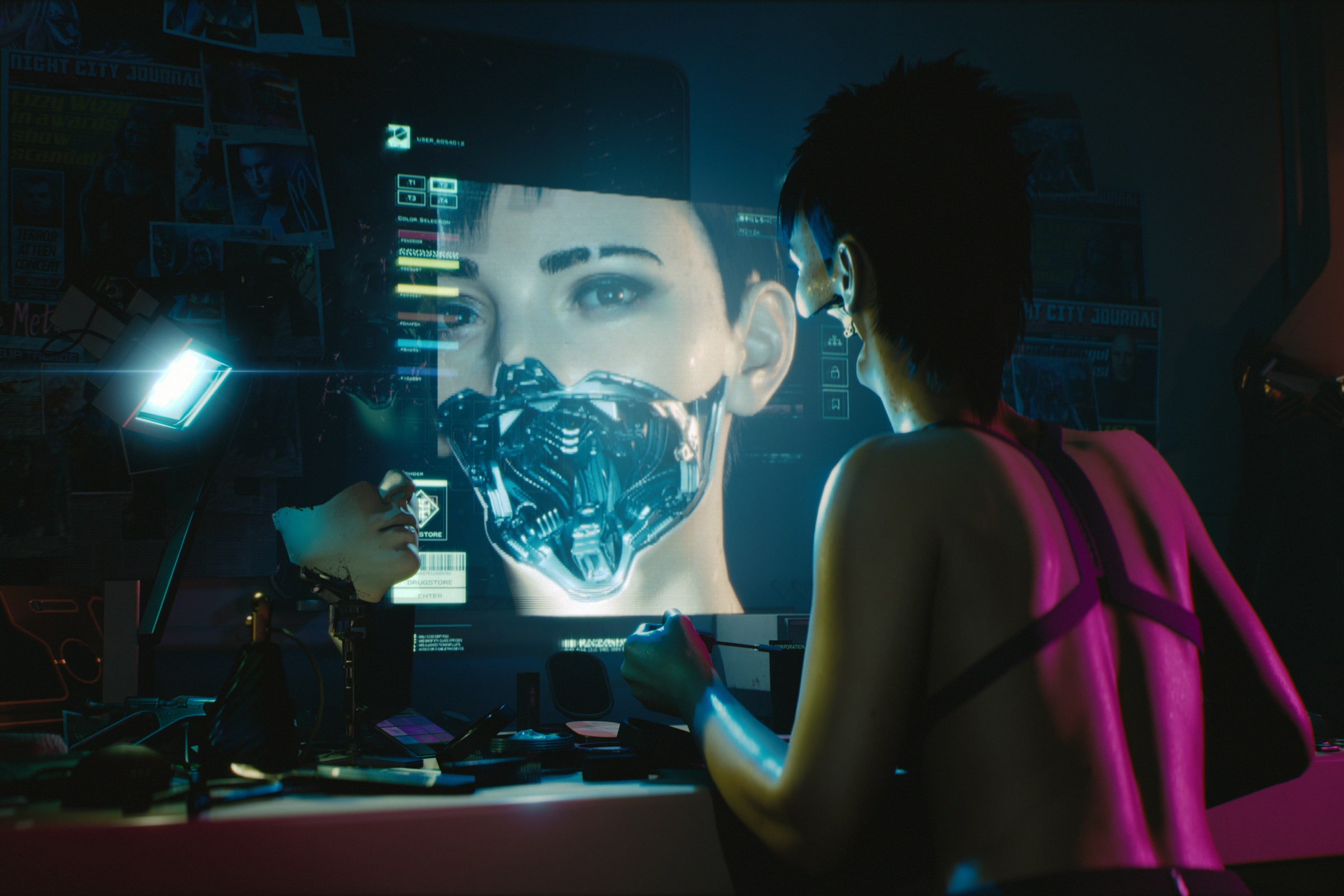
Generative AI in gaming is a technique that involves the use of artificial intelligence to create fresh and unique content for gamers. It is an innovative approach to game development that leverages the power of AI to generate content that is both entertaining and engaging.
At its core, Generative AI in gaming utilizes machine learning algorithms to analyze and learn from existing content. These algorithms can then generate new content based on what they have learned, providing an endless supply of fresh and exciting content for players. This technique has been adopted by major gaming companies.
Generative AI in gaming has brought about a paradigm shift in the gaming industry. With this technique, game developers no longer have to rely solely on manual content creation, which can be time-consuming and repetitive. Instead, they can use Generative AI to create new and exciting content on the fly, ensuring that players are always engaged and entertained.
How Generative AI Can Be Applied to Game Development?
Generative AI is a powerful tool that can be applied to various aspects of game development. Here are some ways that Generative AI can be used to improve the gaming experience:
- Content Creation – Generative AI can be used to create new content for games, such as levels, characters, and items. This technique can help game developers save time and resources that would otherwise be spent on manual content creation. Generative AI can also provide an endless supply of fresh and exciting content for players, ensuring that they are always engaged and entertained.
- Procedural Generation – It is a technique used in game development that involves the use of algorithms to generate game content dynamically. Generative AI can be used to improve procedural generation by creating more sophisticated algorithms that can analyze and learn from existing content. This can lead to the creation of more realistic and immersive game environments that are tailored to each player’s preferences.
- Player Behavior Prediction – Generative AI can also be used to predict player behavior and adjust game mechanics accordingly. For example, if a player is repeatedly failing at a particular level, the game can adjust the difficulty level automatically to ensure that the player remains engaged. This technique can also be used to personalize the gaming experience for each player, providing them with content that is tailored to their preferences and skill level.
- Dynamic Game Difficulty – Generative AI can be used to dynamically adjust game difficulty based on player performance. This technique can help keep players engaged and challenged without making the game too difficult or too easy. With Generative AI, game developers can create games that are challenging but still enjoyable for players of all skill levels.
- Intelligent NPCs – Generative AI can also be used to create more intelligent non-playable characters (NPCs) in games. NPCs can learn from player behavior and adjust their actions accordingly, creating a more realistic and immersive gaming experience. This technique can also be used to create more challenging opponents for players, providing them with a more rewarding gaming experience.
- Bug Detection and Fixing – Generative AI can also be used to detect and fix bugs in games. By analyzing player behavior and feedback, AI can identify bugs and provide suggestions for fixing them. This can improve the overall quality of the game, providing a better gaming experience for players.
- Dialogue Generation – This is another application of Generative AI in game development. It involves using machine learning algorithms to create dialogue that is more natural and realistic. This can enhance the overall gaming experience, making it feel more immersive and engaging.
- Art Generation – Generative AI can also be used to create art assets for games. By analyzing existing art assets and generating new ones based on learned patterns, Generative AI can create new and unique visual styles that enhance the overall look and feel of a game.
- Dynamic Soundtracks – Generative AI can be used to create dynamic soundtracks that adjust based on the player’s actions and the game environment. This can create a more immersive and engaging gaming experience, enhancing the overall game atmosphere.
- Adaptive Difficulty – Generative AI can be used to adjust the difficulty level of a game based on the player’s skill level. This technique ensures that the game remains challenging, yet enjoyable, for players of all skill levels.
Generative AI has the potential to revolutionize game development in numerous ways. From content generation to personalization, this technique can enhance the overall gaming experience and provide new opportunities for developers to create unique and engaging games.

Generative AI Tools for Gaming in 2024
As the gaming industry continues to push the boundaries of creativity and innovation, generative AI tools have become invaluable for game developers. These cutting-edge tools harness the power of artificial intelligence to create unique and dynamic game content that enhances gameplay experiences. Here are some of the best generative AI tools that game developers can use to level up their game development process:
1. Unity ML-Agents
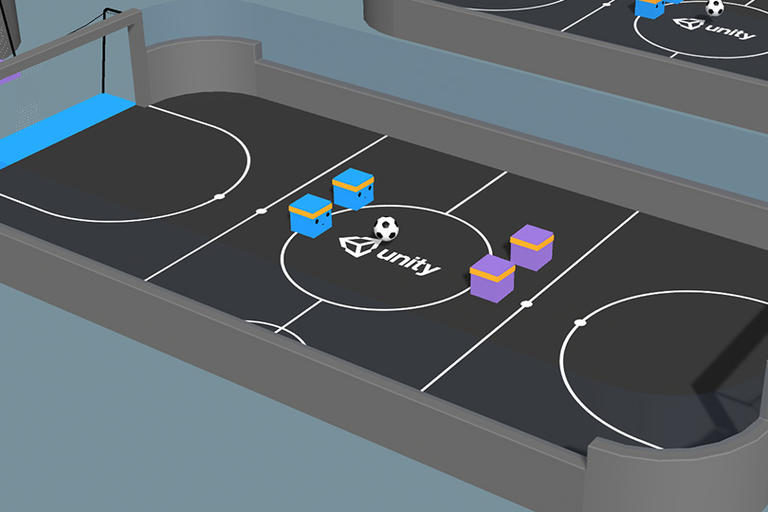
Unity ML-Agents, short for Unity Machine Learning Agents, is an open-source toolkit developed by Unity Technologies that integrate machine learning capabilities into the Unity game engine. It allows game developers to create intelligent agents that can learn, adapt, and make decisions autonomously within game environments.
Unity ML-Agents provides a bridge between the fields of artificial intelligence and game development, enabling developers to create games with realistic and dynamic AI-driven characters, behaviors, and gameplay experiences.
Features:
- Reinforcement learning integration
- Autonomous agent behavior creation
- Training of intelligent agents
- Real-time decision-making capabilities
- Customizable and adaptive AI
- Simulated game environment creation
- Multi-agent coordination and competition
- Support for various machine learning algorithms
- Interactive and dynamic gameplay experiences
- Open-source and community-driven development.
2. Houdini
Houdini is a powerful and versatile procedural content creation software developed by SideFX, a leading provider of 3D animation and visual effects tools. It is widely used in the entertainment industry, including game development, film production, and virtual reality experiences. Houdini’s generative AI capabilities are integrated into its procedural modeling, animation, and visual effects tools, allowing game developers to create complex and realistic game content with unparalleled flexibility and control.
Features:
- Procedural modeling and animation.
- Vast terrain generation.
- Realistic visual effects.
- Customizable game asset creation.
- High flexibility and control.
- Efficient and scalable workflow.
- Dynamic and interactive game content.
- Integrated generative AI capabilities.
- Complex and realistic game worlds.
3. Promethean AI
Promethean AI is a cutting-edge technology that combines artificial intelligence with creative design. It is a generative AI tool that uses deep learning algorithms to automatically generate 3D models, animations, and visual effects for various applications, including video games, virtual reality experiences, and movies.
Promethean AI allows artists and designers to quickly create complex and realistic digital content by inputting simple instructions or concepts, which are then transformed into detailed and visually appealing assets. This innovative technology revolutionizes the creative process by streamlining and automating content creation, empowering artists and developers to bring their visions to life with unprecedented speed and efficiency.
Features:
- Streamlined 3D asset creation.
- Automated visual effects creation.
- Realistic and detailed output.
- Speedy and efficient workflow.
- Empowers artists and designers.
- Versatile application across industries.
- Simplified concept-to-asset process.
- Cutting-edge deep learning algorithms.
- Revolutionizes creative content creation.
4. Tensorflow
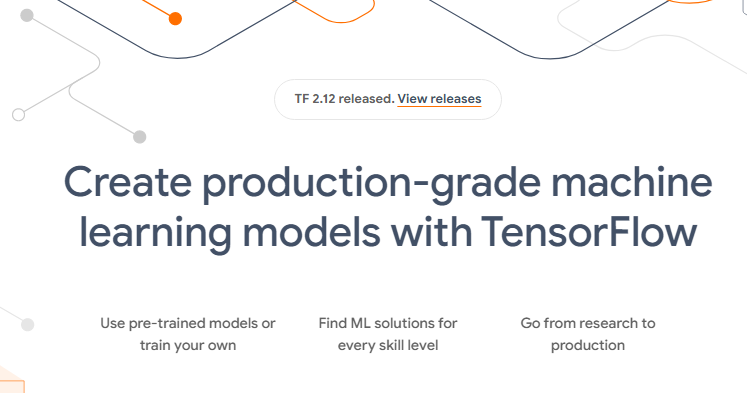
TensorFlow is an open-source machine learning and deep learning framework developed by Google. It provides a robust platform for building and training neural networks to perform various tasks, such as image and speech recognition, natural language processing, and recommendation systems.
TensorFlow allows developers to create complex machine-learning models using a flexible and intuitive programming interface. It provides a vast array of pre-processing functions, optimization algorithms, and visualization tools, making it a comprehensive framework for building cutting-edge machine-learning applications. TensorFlow is widely used by researchers, developers, and data scientists to develop and deploy machine learning models in diverse industries, including healthcare, finance, gaming, and more.
Features:
- Flexible and intuitive programming interface.
- Extensive pre-processing functions.
- Optimization algorithms for efficiency.
- Visualization tools for model understanding.
- Wide community support.
- Scalable for large datasets.
- GPU acceleration for faster training.
- Deployment across various platforms.
- Versatile for diverse industries.
5. GameSynth

GameSynth is a cutting-edge procedural sound design tool designed for game developers. It is a software suite that utilizes generative algorithms and AI-based techniques to create dynamic and interactive audio content for video games.
With GameSynth, game developers can easily generate a wide variety of sounds, such as sound effects, ambient noises, music, and more, with high levels of customization and control. GameSynth’s intuitive interface and extensive library of sound modules make it a powerful tool for creating realistic and immersive audio experiences in games.
From generating realistic footsteps to crafting unique creature sounds, GameSynth empowers game developers to create rich and dynamic soundscapes that enhance the overall gameplay experience.
Features:
- Procedural audio synthesis
- Real-time interactive sound design
- Dynamic audio parameter control
- Versatile sound effect generation
- AI-driven audio creation
- Interactive soundscapes creation
- Realistic sound texture generation
- Adaptive audio generation techniques
- Rapid sound prototyping capabilities
- Extensive audio asset library.
6. NVIDIA GameWorks
NVIDIA GameWorks is a suite of advanced graphics technologies and tools developed by NVIDIA, a leading technology company known for its graphics processing units (GPUs).
GameWorks is designed to help game developers create visually stunning and realistic games by leveraging NVIDIA’s cutting-edge GPU capabilities. It includes a wide range of features such as realistic physics simulations, advanced lighting and shading techniques, realistic hair and fur rendering, dynamic particle effects, and more.
GameWorks provides developers with a powerful set of tools and libraries that can be integrated into their game engines, helping them achieve higher levels of graphical fidelity and visual effects for a more immersive gaming experience on NVIDIA GPUs.
Features:
- Advanced Graphics Rendering Techniques
- Physics Effects & Visual Effects
- Realistic Water Simulation
- Advanced Anti-Aliasing Techniques
- Immersive Audio and Sound Effects
- Efficient GPU Performance Optimization
- Realistic Character Animation
- Lighting and Shadows.
7. AIVA
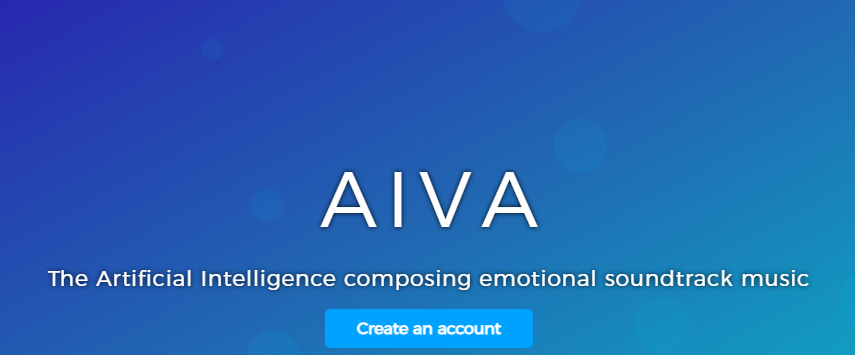
AIVA is an AI-powered music composition tool that uses deep learning algorithms to create original music compositions. It has been used in various industries, including advertising, film, and now, game development. AIVA can produce unique and customizable music tracks that fit the tone and atmosphere of a particular game or scene.
This tool could be particularly useful for game developers who want to create immersive and engaging soundtracks for their games without having to rely solely on human composers. With AIVA, game developers can quickly and easily generate high-quality audio content that enhances the overall gaming experience.
Features:
- AI-powered music composition tool.
- Customizable music tracks.
- Deep learning algorithms.
- Original music compositions.
- Immersive audio content.
8. PolyGen

PolyGen is a generative art tool that uses AI to create unique and intricate polygonal designs. Users can customize the shape, size, and complexity of the polygons, as well as choose from a variety of color schemes and patterns. The AI algorithm generates different variations of the design based on these inputs, allowing for endless possibilities.
PolyGen can be used for a variety of applications, including digital art, graphic design, and game development, where unique and visually striking designs are in high demand. The tool is user-friendly and accessible to both novice and experienced designers, making it a popular choice in the creative community.
Features:
- Procedural texture generator
- Customizable parameters
- Real-time preview
- High-resolution output
- Seamless tiling
9. ArtBreeder
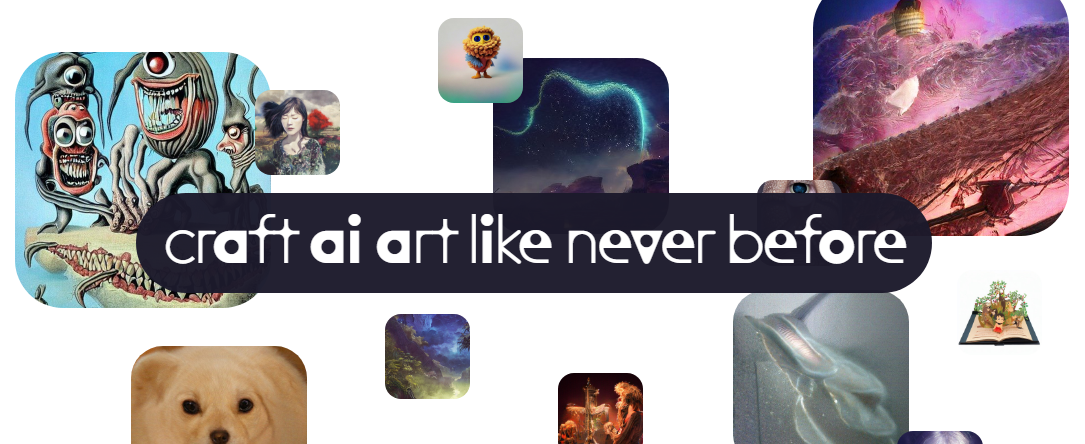
ArtBreeder is a web-based application that allows users to create, explore, and evolve images using generative adversarial networks (GANs) and other machine-learning techniques. Users can mix and match traits from different images, creating new variations that can be further refined and evolved.
The resulting images can be used for a variety of purposes, including game development, graphic design, and art. ArtBreeder has gained popularity in recent years as a tool for generating high-quality, unique images quickly and easily, without the need for extensive artistic skills or knowledge of complex software.
Features:
- Image mixing and evolution
- Generative adversarial networks (GANs)
- Web-based application
- Easy to use
- High-quality images
10. Neural MMO
Neural MMO is an experimental online multiplayer game that uses deep reinforcement learning (DRL) to generate a dynamic, open-world environment. In Neural MMO, players control agents that can learn and adapt to their surroundings in real-time, based on a combination of pre-defined rules and machine learning algorithms.
The game’s developers hope that Neural MMO can serve as a platform for testing and advancing the capabilities of DRL, as well as a fun and engaging game in its own right. The game is still in development but has already attracted attention from the research community such as Microsoft Game Dev Community and could have implications for the future of online gaming and artificial intelligence.
Features:
- Persistent game world
- Large-scale multiplayer support
- Open-source architecture
- Agent-based AI system
- Player-driven economy
- Procedurally generated content
- Deep reinforcement learning
- Dynamic quest generation
- Interactive chat system
- Cross-platform compatibility.
Generative AI in Game Development – Best Practices
Here are the best practices for implementing generative AI in game development:
- Setting Clear Goals and Objectives
- Identifying specific areas where generative AI can be useful
- Defining success metrics and benchmarks for AI-generated content
- Establishing an Effective Workflow
- Collaborating with artists, designers, and programmers to integrate AI tools and techniques into the game development process
- Ensuring proper version control and testing procedures for AI-generated content
- Designing Data Pipelines and Datasets
- Collecting and preprocessing data to train generative AI models
- Balancing the need for diversity and creativity with the need for consistency and quality control
- Selecting Appropriate AI Techniques
- Choosing the right types of generative AI models for the specific task at hand
- Evaluating the trade-offs between different AI techniques, such as GANs, RNNs, and CNNs
- Incorporating Human Feedback and Supervision
- Incorporating feedback from human experts to improve the quality and relevance of AI-generated content
- Implementing systems for monitoring and regulating AI-generated content to avoid inappropriate or offensive results
- Optimizing Performance and Scalability
- Identifying potential bottlenecks and performance issues in AI-generated content
- Using parallel processing and other optimization techniques to improve performance and scalability
- Balancing Creativity and Automation
- Finding the right balance between human creativity and AI automation in game development
- Leveraging generative AI to augment human creativity and accelerate game development, rather than replace it entirely.
Future of Generative AI in Gaming
By using advanced machine learning techniques to generate content and environments in real-time, game developers can create more dynamic, immersive, and engaging gameplay experiences for players. As AI tools and techniques continue to improve, we can expect to see more games that leverage the power of generative AI to create new and exciting worlds, characters, and gameplay mechanics.
As the technology continues to evolve, game developers will need to stay up-to-date on the latest advancements in generative AI to stay competitive and deliver compelling gaming experiences to players. RedBlink is a top-rated Generative AI Development Company known for delivering cutting-edge web and building generative AI solutions. We harness the power of advanced Generative AI applications to drive innovation and foster growth.
Discover the game-changing potential of Generative AI in gaming with RedBlink, a generative AI app development company! As an AI Consulting Company we offer a revolutionary approach, enhancing game development and creating immersive experiences. Harness the power of AI-driven algorithms to generate stunning visuals, lifelike characters, and dynamic environments. Ready to dive more into generative AI? Learn how to build your own generative AI solutions.
References
- Artificial Intelligence-Driven Serious Games in Health Care
- Generative Personas That Behave and Experience Like Humans
- Evolving Levels for General Games Using Deep Convolutional Generative Adversarial Networks
- Designing Participatory AI: Creative Professionals’ Worries and Expectations about Generative AI by Nanna Inie

Director of Digital Marketing | NLP Entity SEO Specialist | Data Scientist | Growth Ninja
With more than 15 years of experience, Loveneet Singh is a seasoned digital marketing director, NLP entity SEO specialist, and data scientist. With a passion for all things Google, WordPress, SEO services, web development, and digital marketing, he brings a wealth of knowledge and expertise to every project. Loveneet’s commitment to creating people-first content that aligns with Google’s guidelines ensures that his articles provide a satisfying experience for readers. Stay updated with his insights and strategies to boost your online presence.
